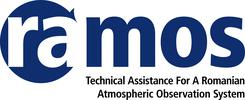RAMOS – Technical Assistance For A Romanian Atmospheric Observation System was an ESA-ESTEC project (ESA/4000118115/16/NL/FF/gp) which aimed to develop and integrate a facility based on a combination of ground-based and airborne remote sensing capabilities to retrieve several atmospheric species (greenhouse gases, air pollutants, aerosols) in the context of current and future space-borne Earth observation missions. RAMOS represented the Romanian contribution to international efforts in setting up ground-based or airborne platforms used for the calibration and validation of Earth Observation mission products during their commissioning and operational phases (e.g., Sentinel-5P, ADM-Aeolus, EarthCARE). The activities of RAMOS relied on significant expertise gained in Romania over the previous decade related to ground-based and airborne remote sensing. The facilities included active and passive remote sensing instruments that actively measured various properties of aerosols, trace gases, and clouds, as well as research aircraft, UAVs, and ground-based mobile platforms from INOE (National Institute of R&D for Optoelectronics), INCAS (National Institute for Aerospace Research “Elie Carafoli”), and UGAL (“Dunarea de Jos” University of Galati).
The work was organized into six major tasks covering the review of instrument requirements, the setup of airborne and ground-based components, their testing during intensive campaigns, and data analysis. Two observation campaigns focusing on greenhouse gases, gaseous pollutants, and aerosols were organized to assess RAMOS’s capability to respond quickly and to provide independent, valuable data for satellite mission validations. One of the campaigns, focusing on NO₂, SO₂, H₂CO, and aerosols, studied the city’s influence on gaseous pollutants and the much cleaner agricultural areas. The second campaign, focusing on greenhouse gases, demonstrated both the capability to use the Romanian Atmospheric Observation System in unfamiliar conditions and the lower detection limits of the measurement techniques.
The project ran from 2016 to 2024.

